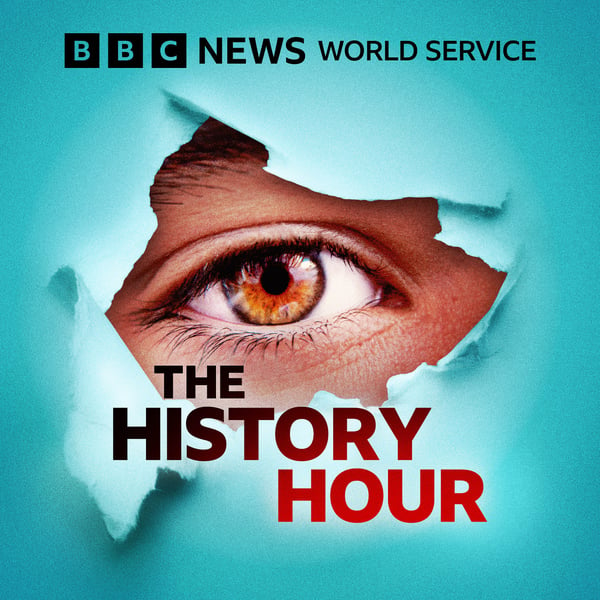Moscow Metro and the Olympics
The History Hour
BBC
4.4 • 879 Ratings
🗓️ 26 July 2024
⏱️ 51 minutes
🧾️ Download transcript
Summary
Max Pearson presents a collection of the week's Witness History episodes.
We go underground for a tour of the Moscow Metro, the subterranean transport network built by thousands of Russian workers in the 1930s.
Our guest Mark Ovenden, author of Underground Cities, reveals how the Moscow system influenced many other countries around the world.
Plus, more about a revolutionary new method for transporting medicines that was launched in Ghana in 1974. The cold chain system helped refrigerate vaccines aimed at tackling potentially deadly diseases.
Also, as Paris lifts the curtain on the 2024 Olympics, we go back to the last time the French city hosted the Games - one hundred years ago.
We hear the remarkable story of Somali 400m sprinter Zamzam Farah, and how she became a crowd favourite in the London 2012 Olympics after finishing last in her heat by 27 seconds.
Finally, we meet Shuss - a French cartoon skier and the first Olympic mascot, designed for the 1968 Winter Games.
Contributors: Tatiana Fedorova – a worker on the Moscow Metro. Mark Ovenden - author of Underground Cities. Patience Azuma – vaccinated as a child in Ghana. Dr Kofi Ahmed – chief medical officer. Harold Abrahams – Olympic medallist. Kitty Godfree – Olympic medallist. Zamzam Farah – Somali sprinter. André Thiennot - manufacturer of Shuss merchandise.
(Photo: Underground train station ceiling in Moscow. Credit: Lorenzo Di Cola/NurPhoto via Getty Images)
Transcript
Click on a timestamp to play from that location
| 0:00.0 | Hello and welcome to the History Hour podcast from the BBC World Service with me Max Pearson |
| 0:10.1 | the past brought to life by those who were there. |
| 0:13.0 | Coming up 50 years ago, a breakthrough in storing vaccines that helped save lives in Ghana. |
| 0:19.0 | We had the opportunity to be humanized against all these killer diseases. |
| 0:24.0 | That's possibly been the reason why we are still surviving. |
| 0:28.0 | Also with the Paris Olympic Games getting underway, we meet the very first Olympic mascot, plus the heroic Somali |
| 0:34.8 | sprinter celebrated for finishing last and may take a look at the Paris Olympics |
| 0:39.4 | from a hundred years ago. |
| 0:41.0 | Each nation had been left to choose its own uniform and the result was an extraordinary |
| 0:46.8 | range of coloured blazers, badges and headgears, from straw hat to Fez. |
| 0:55.0 | That's all coming up later in the podcast, but we're going to begin deep underground |
| 0:57.0 | with the story of architectural and engineering endeavor |
| 1:00.0 | which has nothing to do with the Olympics, |
| 1:02.0 | but which has truly stood the test of time. |
| 1:05.0 | So, time aboard as we take a tour of the Moscow Metro, the Underground Transport Network built by thousands of Russian workers in the 1930s. |
| 1:15.0 | Uma Donoswami is our guy. |
| 1:17.0 | Not only is that one of the world's busiest metro systems, |
| 1:22.0 | around 8 million people use it daily, but it's also one of the most beautiful, as described by the BBC's Steve Rosenberg. |
| 1:31.0 | Beneath Moscow there are platforms that look like palaces, stations like museums. |
| 1:37.0 | Joseph Stalin built this underground as a temple of communism, public transport and propaganda all in one. |
| 1:46.1 | Conceived by Stalin in 1931, it was the crowning glory of the Soviet Union's |
| 1:51.3 | forced industrialization. |
... |
Transcript will be available on the free plan in -244 days. Upgrade to see the full transcript now.
Disclaimer: The podcast and artwork embedded on this page are from BBC, and are the property of its owner and not affiliated with or endorsed by Tapesearch.
Generated transcripts are the property of BBC and are distributed freely under the Fair Use doctrine. Transcripts generated by Tapesearch are not guaranteed to be accurate.
Copyright © Tapesearch 2025.

